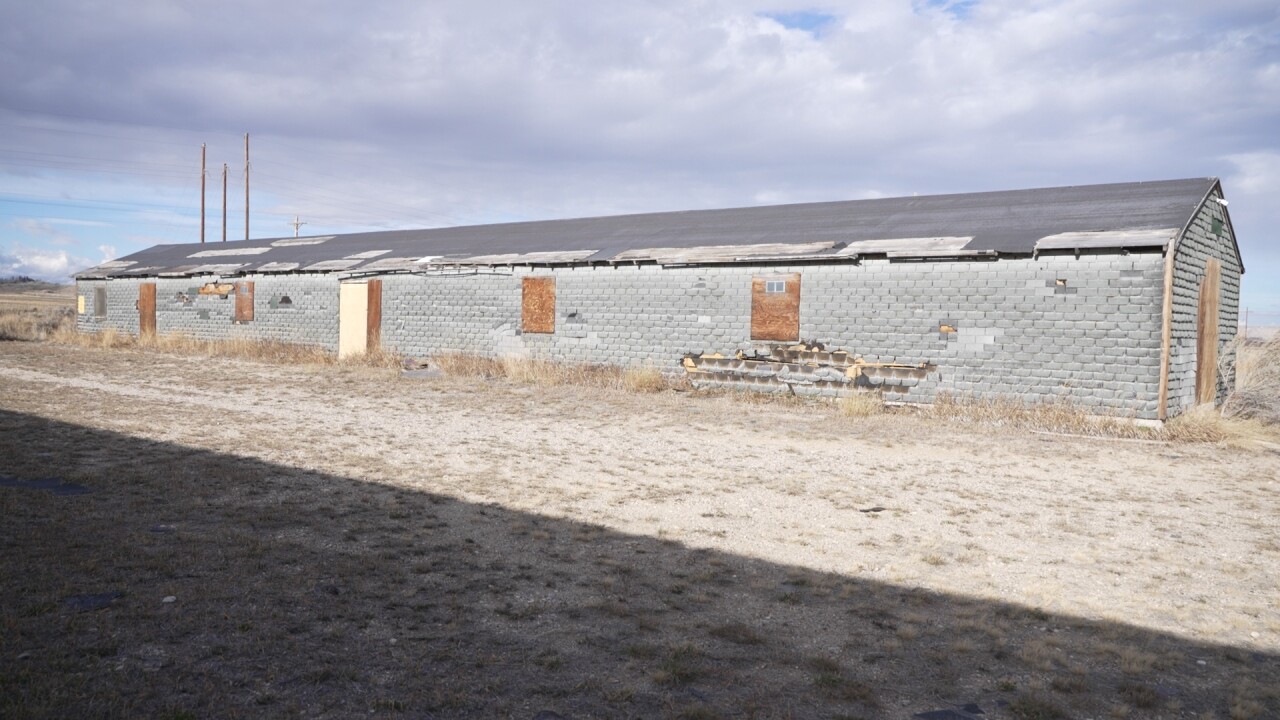PARK COUNTY, WYO. — A recent string of vandalism at the historic hospital complex of the Heart Mountain National Historic Landmark is threatening some of the last surviving structures of the World War II Japanese American internment camp.
Watch the video below to see the extent of the damage at the historic site:
The Heart Mountain Relocation Center, which once held 14,000 Japanese Americans from 1942 through 1945, included a full hospital complex that saw more than 500 births and nearly 200 deaths. Today, only three of the buildings still stand.
Over the past two months, the federally-owned buildings have been hit four times by intruders: once in September, twice in October, and most recently, last Thursday. Vandals have broken windows, damaged the boarded-up doors, kicked in walls, and left graffiti and trash behind.

"Every time something gets ripped down, it destroys more of the original fabric. We have less to hook to,” said Logan Christie, director of operations for the Heart Mountain Wyoming Foundation, who helps preserve the site.
The frequency of the vandalism has forced staff to respond with temporary fixes, including boarding up openings and covering damage with wooden boards. Christie said restoring the structures would come at a high cost.
"Now basically all we can do is bandage it," said Christie. "Fixing with any integrity any of the damage, it'll be thousands."

Weather and time have also taken a toll on the buildings, and they are unsafe to enter due to exposed asbestos.
Complicating the issue, the foundation does not own the land where the hospital buildings sit. The property is a patchwork of public land overseen by the Bureau of Reclamation and private landowners. The foundation has worked for nearly a decade to complete a federal land transfer that would allow it to fully preserve the remaining structures, but Christie said delays have stalled the effort.
"Bureau of Reclamation and BLM have worked great with us trying to do the transfer, but the federal bureaucracy that's at play has prevented it for roughly the last eight or ten years," said Christie. "It's up to us for upkeep on the buildings, but upkeep isn't possible because we can't go into the buildings."

Once the transfer is complete, the foundation hopes to put more safety measures in place to prevent future vandalism and eventually turn the structures into permanent exhibits.
"Every year the buildings get a step closer to not standing, so that's really a concern out of my end," said Christie.
The Park County Sheriff’s Office is investigating the vandalism and increasing patrols, and the foundation has installed cameras. Before, power limitations in the remote area had prevented surveillance, and Christie said he had even resorted to nighttime patrols himself.
"I almost can't put into words the level of frustration of finding something that holds such importance being desecrated to a point, and then also doing the side of fixing things and going through red tape and paperwork," said Christie. "It adds a lot to our already busy plate, very unnecessarily."

He does not believe the vandalism was motivated by hate toward the site, instead likely young teenagers trespassing, but he said the impact on descendants of former internees is still profound.
"The deep-rooted meaning of this site and the power of place strikes a chord in myself, but specifically in former incarceration descendants who were maybe born there or who lost family members," said Christie. "The 14,000 some odd ones who were here at Heart Mountain to have a place to return to now being destroyed and completely disregarded by acts like this is just horrific to me."

Heart Mountain was one of 10 camps where more than 120,000 Japanese Americans were detained during World War II. The interpretive center that tells that story sits below the hill on land owned by the foundation, but the historic hospital buildings remain the most concrete remnants of a facility where so many births, illnesses, and deaths occurred.
Christie hopes those responsible will come to understand the gravity of what they are damaging.
"I'm hoping that the individuals who are doing this, who are being the vandals, realize that they're not just abandoned buildings in the middle of farmland," said Christie. "Hopefully, that when that realization happens, it's a eye-opening experience for them."



